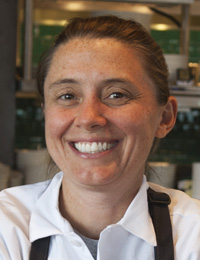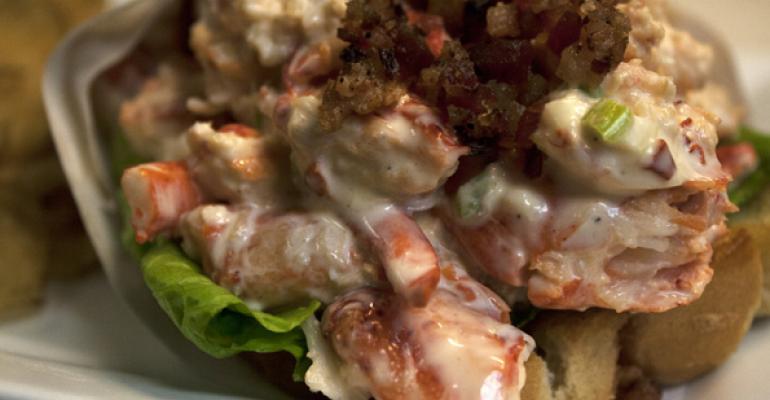
We don’t have to tell you why seafood sustainability is important to the environment and many of your customers, but a chef in Denver recently found her connection to a fisherman more than 2,000 miles away helped drive sales.
Sheila Lucero, executive chef at Jax Fish House & Oyster Bar Restaurants, was seeking sustainable product for the Colorado restaurant group long before sustainability was a household word. Over the years she has cultivated relationships with seafood sources across the country and the world, and Jax was the first restaurant group in Colorado to embrace the Monterey Bay Aquarium Seafood Watch program.
Recently, Lucero added the name of one of those sources—Captain Bobby Springer, a third-generation Maine lobsterman—to an item on her menu, and sales went through the roof. The Captain Bobby Springer Maine Lobster Roll, featuring bacon lardons, celery and fresh-made aioli on a house-made split-top roll for $24, was already a popular item, but after adding Springer’s name, sales increased 27 percent.
The latest trend forecast from the NRA featured plenty of sustainability, but a new entry cracked the top 10 this year: farm- and estate-branded items. Lucero’s menu tweak is a great example of that, and also proves sustainability can come with an ROI.
Lucero recently talked about sourcing and selling seafood.
How have you developed relationships with far-flung fisheries?
Mainly through word-of-mouth and connections with other purveyors, going to seafood shows and doing our homework online. Recently we’ve made a connection with Sea To Table, and it’s changing the way we look at ordering seafood. They work to connect chefs with fishermen. It’s a cool group to work with. Now we know the name of the boat and where and when the fish was caught.
Tell us about your lobster roll and why adding the fisherman’s name helps?
A lobster roll is a contentious item—contentious because many think they know exactly what should or should not go on it. The most “pure” of lobster rolls you will find on the East Coast have three ingredients: a lowball hot-dog bun, fresh lobster and gobs of mayonnaise. Maybe you will find some celery in there. We felt like we could do better, so we make our own pickles, we add bacon and most notable, we bake our own split-top rolls. We don't hope to present the “original” lobster roll, we aim to make the most delicious one. We hope to control every component, which is why we make our own aioli, and every other ingredient. This same mastery of ingredient is exactly why knowing the source, the boat and the fisherman who is catching and shipping our lobsters is so essential. From a branding standpoint, it gives the menu item greater attention and acclaim, and from a food standpoint, it guarantees freshness, flavor and provenance. This is particularly important in the case of a lobster roll, which lies toward the top of the sandwich price range. The guest sees greater value at any price point if they know we have a boat-to-table connection with the lobster they are choosing to enjoy.
You worked with Rappahannock River Oysters to develop a customized oyster, the Emersum Oyster, for Jax. What was that like?
I equate it to creating a wine. We’ve worked with Rappahannock for years, and we are known for having a lot of oyster varieties. We thought it would be fun to collaborate with them and have them grow an oyster specifically for Jax, so our executive manager Adam Reed and I visited Virginia and started looking at plots and tasting oysters. From that we were able to collaborate on what kind of oyster we wanted them to raise Their flavor profile can change drastically depending on the current and the cages where they are raised.
Do you serve any seafood from Colorado?
We do—catfish, striped bass and trout.
You menu some less-familiar seafood and bycatch products, the latter caught unintentionally by fisheries seeking more popular fish. Do some of these less common varieties test your skills as a chef?
Sure. We recently got in some sea robin, something we’ve never seen. It was really hard to butcher. But overall it’s fun, it shakes you up and gets you out of the norm.





